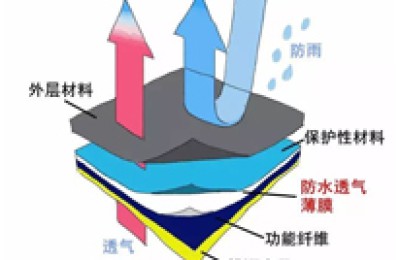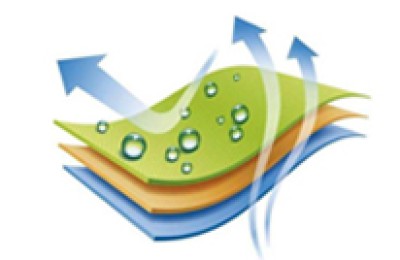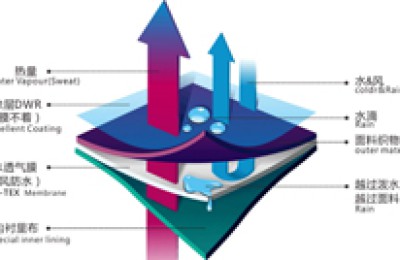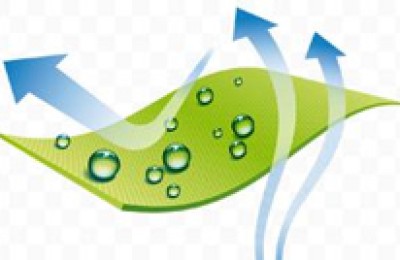PTA has been operating strongly recently, with the 09 contract rising from 3,128 yuan/ton in late April to a maximum of 3,808 yuan/ton. The reason is that the cost value center has shifted upward. Regarding the market outlook, the author’s analysis is as follows:
1. Supply intervention, crude oil is on the strong side
OPEC+ meeting: On June 6, 2020, OPEC+ production Oil countries held a ministerial meeting via video and reached an agreement on extending the scale of production cuts. According to the agreement, OPEC+ countries will extend the 9.7 million barrels/day production reduction from May to June to July 31; at the same time, countries that failed to achieve 100% of the production reduction quota from May to June will reduce production in July. -Additional production cuts in September to compensate. In addition, in order to supervise the implementation of production cuts, the OPEC+ Oil Producing Countries Joint Ministerial Supervision Committee will hold meetings every month until December 2020.
OPEC+ has a relatively high overall degree of completion, but some countries are slacking off on production cuts. On April 13, 2020, OPEC+ countries reached a historic production reduction agreement: from May 1, 2020 to June 30, 2020, the production reduction quota of OPEC+ countries is 9.7 million barrels per day. According to statistics and calculations, OPEC+’s production reduction compliance rate reached 85.66% in May. Among them, the production reduction compliance rate of OPEC countries is 85.31%. Specifically, among the member countries, countries such as Saudi Arabia, the United Arab Emirates, and Kuwait have exceeded or are close to completing their production reduction tasks; while the compliance rate of countries such as Iraq and Angola is less than 50%, which is dragging down the production reduction compliance. Non-OPEC countries completed 85.26% of their target production reductions in May. Among them, Russia, Mexico, and Oman are close to completing or have completed their production reduction targets, while Brunei, the Republic of Sudan, and the Republic of South Sudan have reduced their production by less than 30%. The contradiction between crude oil supply and demand in the post-epidemic period still exists, causing Saudi Arabia and Russia to change their radical sentiments of increasing production to seize market share at the OPEC+ meeting in March. They hope to increase oil prices while maintaining their markets by extending the scale of production cuts and urging oil-producing countries to implement production cuts. share.
The number of U.S. oil rigs has been reduced for twelve consecutive weeks, which has dropped to a historic level, which means that U.S. crude oil production will continue to decrease in recent weeks. Data released by Baker Hughes, the oilfield services arm of General Electric Co., showed that in the week ending June 5, the number of oil wells drilled online in the United States was 206, 16 fewer than the previous week; and 583 fewer than the same period last year. Market participants are also keeping an eye on the Gulf of Mexico storm. Tropical Storm Cristobal, which has already brought flooding to Mexico and Central America, turned into a tropical depression on Friday and then turned into a tropical storm again. It is expected to enter the central Gulf of Mexico on Saturday, and offshore oil platforms may be affected. It could then make landfall in the U.S. state of Louisiana on Sunday, where there are a large number of oil refineries. Through statistics on the impact of the US hurricane season on crude oil production in the past few years, it was found that from 2017 to 2019, the impact of the US hurricane season on US crude oil production ranged from 700,000 barrels/day to 1 million barrels/day. The impact of the hurricane season in 2018 was relatively large. Small, the production decrease is about 300,000 barrels per day, and the impact is generally short-lived, and production usually recovers within 1-2 weeks. The famous Hurricane Katrina in 2005 caused a reduction in U.S. production by 1.614 million barrels per day, which continued to affect production for more than a quarter. According to EIA’s forecast of the hurricane’s path, the hurricane’s path after entering land will avoid major crude oil producing areas. It is believed that due to the impact of the hurricane moving northward over the Gulf of Mexico, the decline in U.S. offshore platform production may continue to expand, but the impact on onshore crude oil production will be small. The impact of the hurricane will be short-lived, and production is expected to recover within 1-2 weeks. It is still important to note that July to September is the hurricane season, and changes in crude oil production require attention to the destructive power of hurricanes this season.
On the whole, OPCE+ will extend production cuts, and OPEC+ member states will agree to launch a compensation mechanism for production reduction quota fraud. Several major resolutions at this meeting formed effective support for the crude oil market in the third quarter, and oil prices have more motivation to continue to rise.
2. PX inventory is high and how many devices are losing money
In 2019, PX entered a new production cycle, with new production capacity reaching 70%, significantly higher than Due to the downstream PTA and polyester, PX is in a highly overcapacity situation in 2020, processing fees have been significantly suppressed, and have reached lows in recent years, and some devices have already suffered losses. On the other hand, with the rapid expansion of domestic private refining and chemical production capacity, domestic PX production has increased significantly, and import dependence has rapidly decreased. Therefore, the relatively high-cost overseas monomer production capacity and domestic small-scale devices are trapped in a prisoner’s dilemma. Amid poor profits, domestic and overseas maintenance plans have not increased in the second quarter, and PX devices are still operating at high load. Therefore, it is expected that PX processing fees will also remain weak for a period of time until long-term losses bring about the clearing of production capacity.
Recently, the price difference between PX and naphtha has fallen to a low of 160-170 US dollars/ton. Most companies are currently in a state of loss. At present, the expectations for PX factory maintenance are still unclear. Only South Korea and India The PX plant has reduced production, but the extent of the reduction is average. In the short term, domestic Zhenhai Refinery plans to conduct maintenance for half a month on June 19. Overseas, South Korea’s Lotte and Hanwha may reduce production, but the extent of the reduction has not yet been determined. In the later stage, it is not ruled out that the PX factory will correct profits through production suspension and load reduction, or repair the PX-N price difference through naphtha cracking price difference.
3. PTA inventory and processing fees are relatively high
As of May 29, PTA circulating inventory was 2.4979 million tons, and PTA warehouse receipt inventory was 116.05 million tons, and the total PTA inventory is 3.6584 million tons, a new high since 2015. As of the end of the month, the overall load of domestic PTA devices was stable at 86.24% (Hengli Petrochemical 4#2.5 million tons was added in February, and the domestic effective production capacity base of PTA was adjusted to 52.39 million tons), affected by Hanbang’s 2.2 million tons in the middle of the month.�Affected by the unplanned shutdown of the production line, PTA supply and demand are basically in a balanced state. Under poor supply and demand, the PTA basis has been at a premium. At the end of May, the PTA basis basically remained at a weak level of -120. The basis is weak and there is no delivery in the short term. Under the restrictions, some circulating stocks will continue to be diverted, and futures stocks may rise again.
This year is the year for the launch of new PTA equipment, and production capacity is facing excess. According to conventional logical reasoning, PTA processing fees may be at a neutral and low level in the context of oversupply. However, this year’s market has been volatile, with crude oil prices dominating the market, and PTA processing fees remaining at an optimistic level. At present, the PTA processing fee is around 800 yuan/ton. Driven by high profits, the load of PTA factories is relatively high. Xinjiang Zhongtai, Yangzi Petrochemical, Hainan Yisheng and other units that were originally planned to be overhauled in June have all been postponed. The adjustment of post-processing fees is the main fluctuation in PTA valuation. On the one hand, attention is paid to the operation of PTA equipment in the later period, and the supply is too high, which will transmit the squeeze processing fees downward; on the other hand, crude oil is at a high level, which also squeezes the price of PTA. processing space.
4. Poor demand
The comprehensive production of polyester is stable at 86.72%. my country is the world’s largest textile and apparel exporter. With such a huge impact caused by the epidemic, the textile and apparel industry has been greatly impacted. According to customs data, from January to April 2020, my country’s textile exports were US$39.167 billion, a year-on-year increase of 1.32%; clothing exports were US$30.971 billion, a year-on-year decrease of 21.99%. At present, the level of textile export orders is still not high, and many companies have skipped summer orders and directly produced autumn and winter fabrics. Weaving mill inventories remain high. Up to now, the order volume of several major European customers such as Spain and Italy has recovered to 40-50% of the level of the same period last year. Not only are there almost no large orders, but the contract price is very low (the purchaser takes factors such as the depreciation of the RMB exchange rate into consideration. Inside). Due to concerns about the continuous rise in raw material prices, high labor costs, and the need for frequent equipment debugging due to varieties, which affects production capacity, domestic textile and garment companies are relatively reluctant to small-volume, multi-batch, unprofitable orders. Some companies would rather reduce production or shut down production. Plan to take this kind of export orders.
The weakness in the apparel industry has naturally been passed on to the upstream weaving industry. As of June 4, the average inventory of weaving enterprises in Jiangsu and Zhejiang has reached about 42 days, which is similar to the highest level in previous years. However, it has just reached the beginning of June. According to the experience of previous years, the next few months will be the off-season inventory stage. .
V. Conclusion
Poor demand and excessively high supply will squeeze PTA processing fees downwards. Crude oil is running strongly, and the rally is not yet over, and is expected to continue to increase the value of PTA. PX is oversold. In terms of operation, PTA placed orders at low levels to track and hold. The target price of the 09 contract is 4,000-4,200 yuan/ton; the forward contract is expected to gradually rise to 5,200. </p






